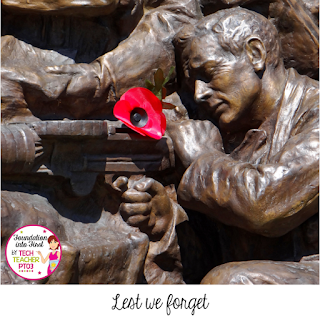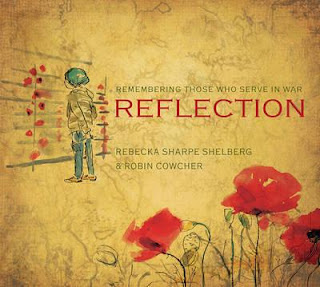Remembrance Day 2018 marks the 100th anniversary of the Armistice which ended the First World War (1914 - 1918), which makes this year a major event in any social studies calendar.
As part of the Australian Curriculum HASS for Foundation Year, Year 1, Year 2 and Year 3 studying community celebrations and commemorations here and around the world is a large focus, so all year levels can benefit from studying Remembrance Day.
Any discussion about war and death can be difficult topics for young students to explore, however, they are essential foundations of knowledge that early years' students need to have in order to understand the 'why' of how we commemorate. So what key points do you need to keep your students focus on when teaching about Remembrance Day and how can you do this in an effective way? Here are some of the ways I unpack this event for primary school students.
REMEMBRANCE DAY IS A COMMEMORATION NOT A CELEBRATION
During the lead up to ANZAC Day I heard many people talking about the upcoming ANZAC Celebrations... we DO NOT celebrate ANZAC Day, we commemorate it. Likewise, we commemorate Remembrance Day (in the United States Veterans Day has replaced Remembrance Day as a celebration). It's so important that students understand the difference between the two types of events. If you need to teach this to students you will find this pack particularly useful for sorting the two types of events.
WAR CAN BE SCARY AND WE MUST NEVER FORGET THIS
The phrase 'Lest we forget' is important to teach to students. Yes, war is scary. War is dangerous. Many people die in a war. Lest we forget this - for if we do, it can so easily happen again! Students must understand this line because it is key to why we commemorate Remembrance Day and ANZAC Day and state the ode during official assemblies.
THEY WILL NEED TO STAND IN SILENCE FOR TWO MINUTES
Standing in silence can be almost impossible for young students, however, it's important they understand this tradition and observe it. On November 11 I always tell students early in the day, that they will need to stand very still at 11 am for 2 minutes silence. I explain that this is a time we are to spend reflecting on the sacrifices made by our armed forces and the impact war can have on people's lives.
I've always found this video to be particularly powerful for showing students that standing still during the traditional 2 minutes silence is respectful and appropriate.
THE POPPY IS A SYMBOL OF REMEMBRANCE DAY
Although we are now seeing the poppy as an acceptable flower to help commemorate ANZAC Day, it is still the traditional and widely recognisable symbol of Remembrance Day. The history of why the poppy was chosen is a difficult one to explain to young children (the red symbolises the blood-soaked battlefields of northern France and Belgium during the First World War) but there are some picture books that cover this topic in a child-friendly manner.
Some of my favourites include...
Crafting a poppy can make a fun final activity and these poppies can be used in a whole class display or as part of a writing prompt for students to display their learning.
You can download a free Poppy Craft activity sheet here.
INVITE A MEMBER FROM THE ARMED FORCES TO YOUR SCHOOL - PAST OR PRESENT
Not only does an incursion of this kind allow students to practice their questioning skills (older students should be working on developing open questions by now) having a real person to ask questions to can be a fantastic way to make this a real experience and put flesh on the bones of history.
Students might like to find out about the different branches of the armed forces and how these differ from country to country.
If you're unable to get a person from the armed forces to attend, past or present, then let your students write to a member of the armed forces currently serving through the Message to the troops' page. Students can write a postcard or a letter to servicemen and women to thank them for their courage and ask them questions - they might write back!
Interesting facts
- Did you know that the United States do not commemorate Remembrance Day on the 11th of November each year but instead call this day Veterans Day and it is a public holiday?
- In the United States, Remembrance Day was initially called Armistice Day but was renamed Veterans Day in 1954.
- Veterans Day is a celebration and honours military veterans who have served in the United States Armed Forces.
- Veterans Day in the United States is not to be confused with Memorial Day, a public holiday in May, which is a commemoration of those who died while in military service.
















No comments
Note: only a member of this blog may post a comment.